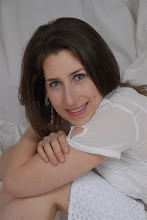Over the weekend I was away from the kids and hubby (two whole days and nights!), and finally finished the first draft of my current work in progress. It feels incredible to have that behind me. Now for the fun part! I've sweated and struggled to get the basic story hammered out, and now comes the polishing and fine tuning.
With the help of my awesome critique partner (hi Katie!), I'll get this one ready for submission in the next few weeks. It's the fourth romantic suspense in my series with TWRP, and I can't believe I've almost finished my fifth book. This one features Rhys and Neveah, and is tentatively titled Relentless. I'm already thinking about Luke and Emily's story. I kind of like Absolution for the title on that one.
This all would have happened a lot sooner had my brand new computer not crashed. I had to send it back to HP to get a new hard drive put in. Ah, the joys of the electronic age. What a weird feeling to be cut off from the world like that. But I digress.
At my RWA chapter meeting last week, we discussed plotting techniques and the responses from our published authors were varied. Some plotted to the nth degree so that every single scene was laid out before they sat down to write the first draft. Others didn't plot at all, just started with a basic idea where they knew the start and maybe the ending (I had to cover my shudder of horror). Others liked the snowflake technique or pearls of wisdom snatched from Save the Cat.
Every writer has their own system, but I wanted to share some other ideas with those of you out there struggling with your story in case they might be of help. Maybe you're at a dead end in your plot, or maybe you can't figure out your characters. Personally, I always write the high plot points first, then the love scenes. After that, I go back and fill in the holes with the subplots and smooth the whole thing out. In my final pass, I add in all the five senses I can. But that's just me. I'm a plotter, but I've also been known to do a bit of pantsing from time to time. The trick is to find what works for you.
I still get stuck, however. Like last week I had no idea how I was going to bridge a major gap between plot points, and I was getting really frustrated. While I was out power washing the fence, I had my Ipod playing on my hero's playlist. This is one technique that really helps me get focused when I sit down to write. I give each major character a playlist so that I have some music ready for writing time. As soon as I hear the music, I'm popped into their headspace. Anyway, out power washing the fence, this one song came on and whammo! I could see Rhys so clearly, his body language and the way he carries himself, and I got to wondering what he was thinking. My brain started whirring and as soon as I'd finished up outside, I came in and went straight to my computer.
Then I did a mock interview for both my hero and heroine, asking them all kinds of deep and meaningful questions like what their worst fear was, what their most crippling insecurity was...stuff like that. Once I was finished, I suddenly knew how to bridge that gap I'd been struggling with. If you've never interviewed your characters before, I highly recommend it. Not only do you get deeper into their heads, but you might learn something about them that you never knew before.
What techniques do you use to get you out of a writing slump?
New book release!
-
As a former warlord turned assassin, dragon shifter Tiber has never been
great with women—and the moment he meets his mate, he sticks his foot in
his ...
4 weeks ago










.jpg)








3 comments:
Yes, interviewing my characters always helps! I also meet w/ my local CP to flesh things out. Sometimes just talking about things aloud makes a big difference in the direction of a plot :)
I look forward to our future IM plotting session!
Yes, I interview my characters too, and find it really helps to make them into three dimentional characters. I hadn't thought of giving them a 'play list' though.Thanks, that's something I'll try out.
Post a Comment